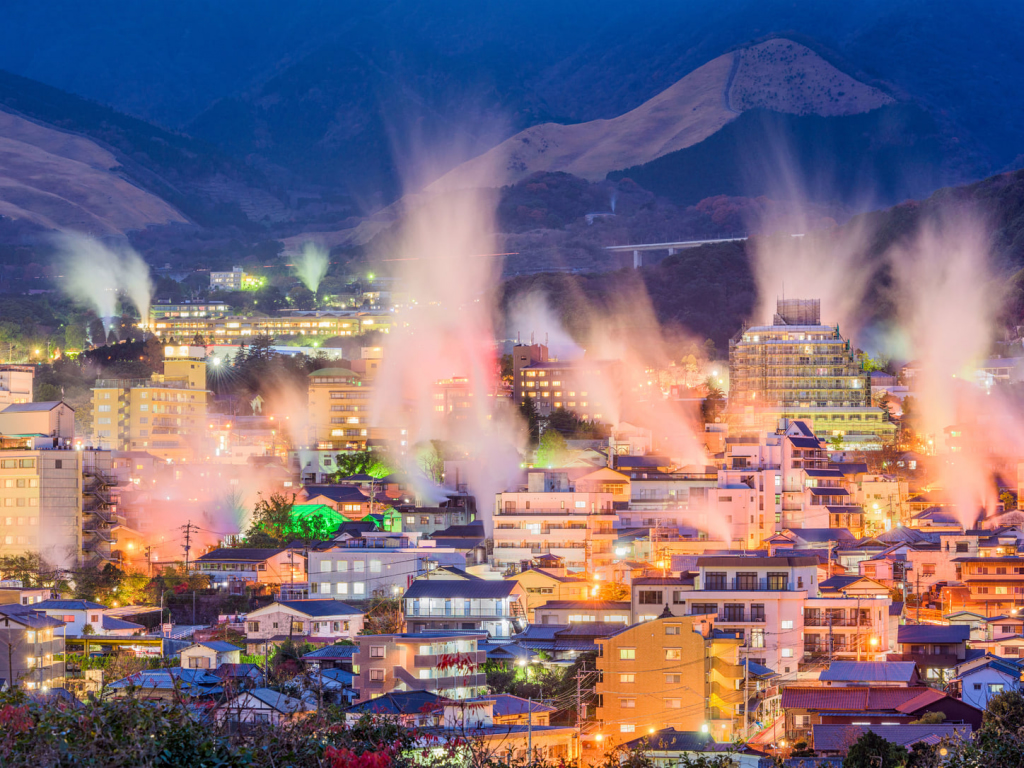Oita Prefecture, the steamy, smoldering land encompassing Kyushu’s northeastern coast, was reportedly named by legendary Emperor Keiko. While visiting the region he was so captivated by its natural beauty that he named it Okita-kuni (the Land of Great Fields). Centuries later, long after “Okita” became “Oita,” the land remains a fascinating destination to immerse yourself in tradition – and soothing hot spring waters.
Oita Prefecture is one of Japan’s premier regions to experience the natural phenomenon of onsen, or natural hot springs. Being home to the largest number of onsen – and the highest annual yield of hot spring water – in the entire country, travel to each nook and cranny of Oita Prefecture to fully explore and indulge in this incredible resource.
The obvious place to begin your bathing journey is the city whose name is practically synonymous with onsen: Beppu. Boasting more than 100 public baths – and enough hot spring water bubbling up from 2,700 different sources to fill a total of 1,800 Olympic-sized swimming pools daily – Beppu was designated by the government in 1950 as an International Tourism Hot-Spring Cultural City.
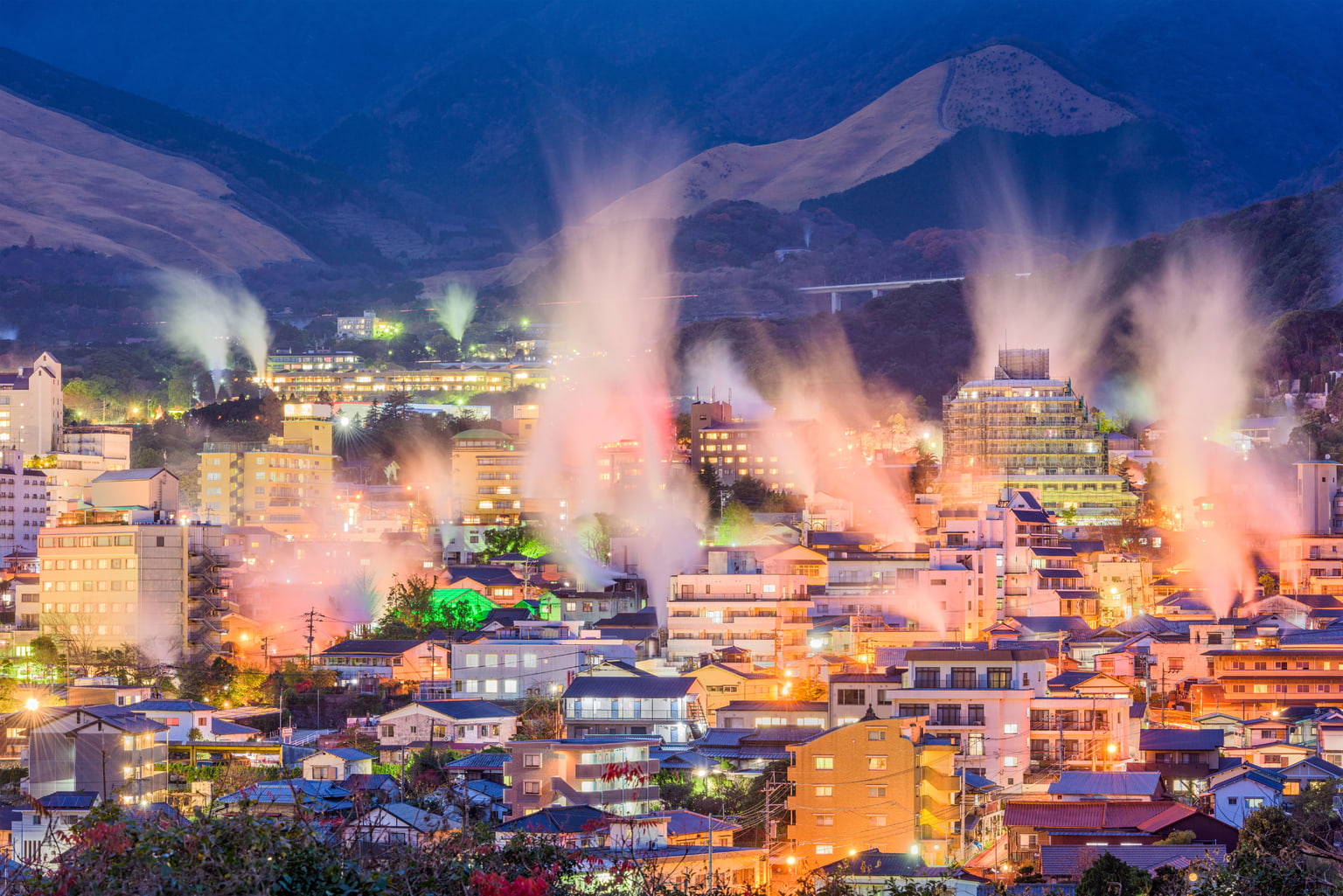
Beppu
The city is blessed with eight separate major hot springs – Hamawaki, Beppu, Kankaiji, Horita, Myoban, Kannawa, Shibaseki and Kamegawa – whose rich mineral content consisting of acid, sulfur, salt, iron and alum provides an array of health benefits that go beyond the mere pleasure of soaking.
Another thing that Beppu is known for is its jigoku (hells): seven gorgeous hot springs meant for viewing rather than bathing. Given their scalding temperatures, these pools are for admiring from afar. Named for their various respective geographical features, they are as follows: Umijigoku (Sea Hell), Oniishibozu Jigoku (Shaven Head Monk Hell), Shiraike Jigoku (White Pond Hell), Kamado Jigoku (Cooking Pot Hell), Oniyama Jigoku (Monster Mountain Hell), Chinoike Jigoku (Blood Pond Hell), and Tatsumaki Jigoku (Spout Hell).
Often said to be the most picturesque among all of the hells is Umijigoku. Created by an explosion at the nearby Mount Tsurumi, the clouds of steam pouring out from its turquoise-hued pools do indeed resemble ocean waters.
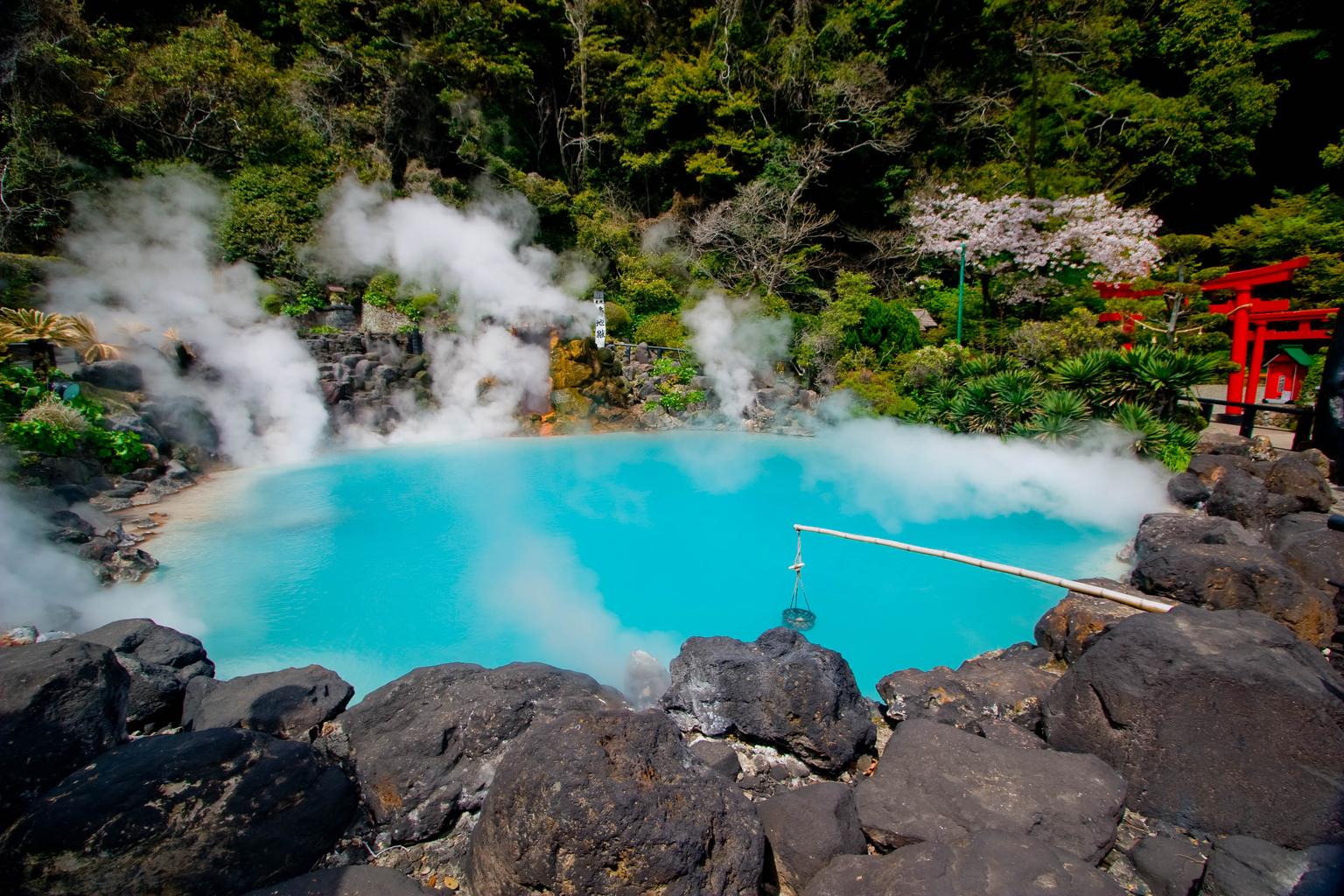
Umijigoku
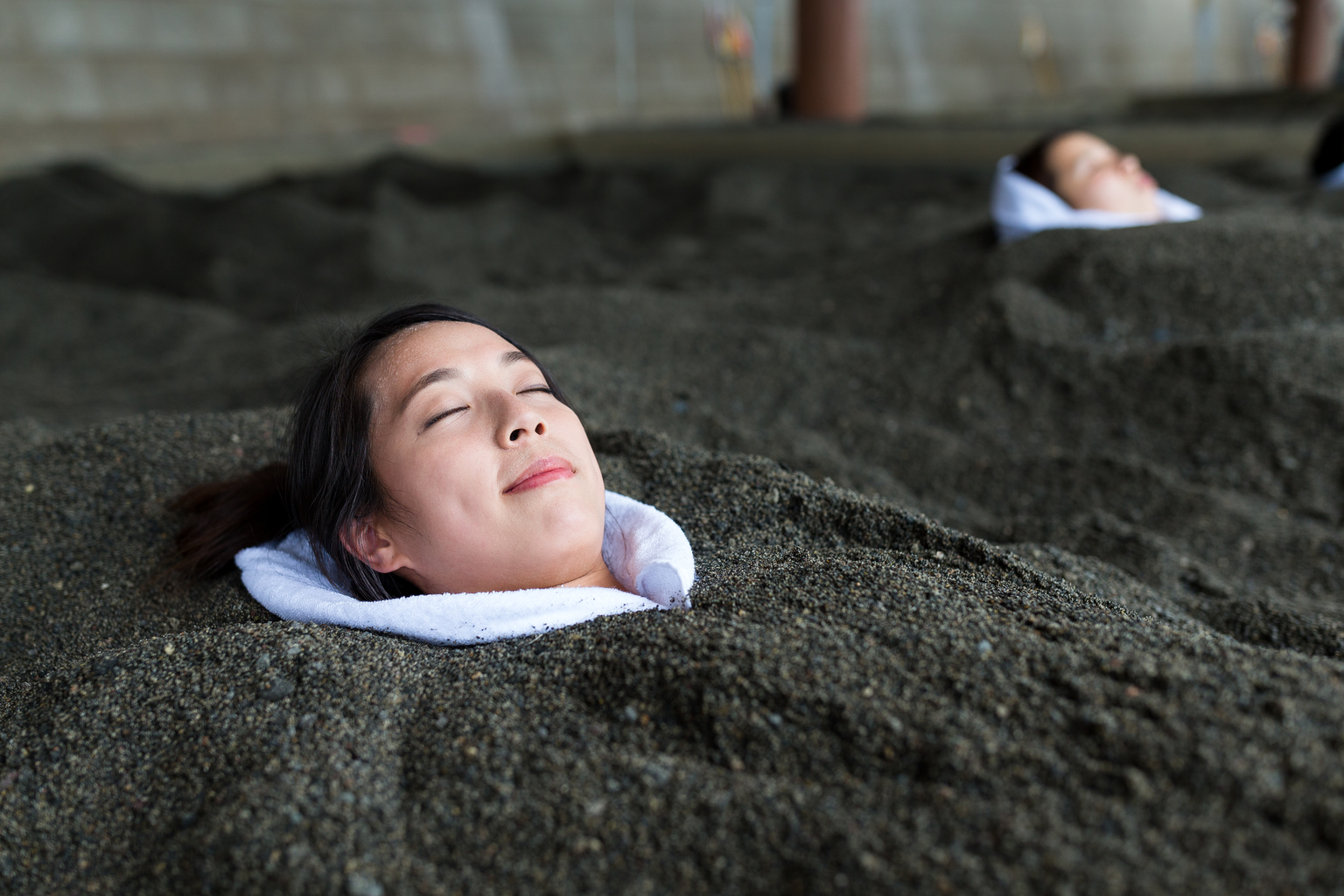
Beppu Beach Sand Baths
Going along with the ocean theme, consider experiencing another angle altogether to your bathing adventures with a visit to the Beppu Beach Sand Bath.
After changing into a yukata (summer kimono) inside a locker room, you will be buried up to your neck in warm sand that permeates your pores, allowing you to experience deep relaxation before returning inside to shower off and then bathe at your leisure.
The experience of sand bathing can help promote healing from such ailments as joint pain and digestive issues, besides simply leaving you with a feeling of overall nourishment and wellness.
Around a 35-minute southwesterly drive from Beppu is lovely Yufuin, another famed onsen resort town that is framed by the dramatic backdrop of Mount Yufu.
The hills around town are dotted with many an atmospheric ryokan, as well as additional attractions such as shops and museums. Consider a stay at exceedingly stylish luxury inn Sanso Murata, which features 12 guest houses in addition to its main building, or simply enjoy the atmosphere by visiting its bar, café or art gallery.
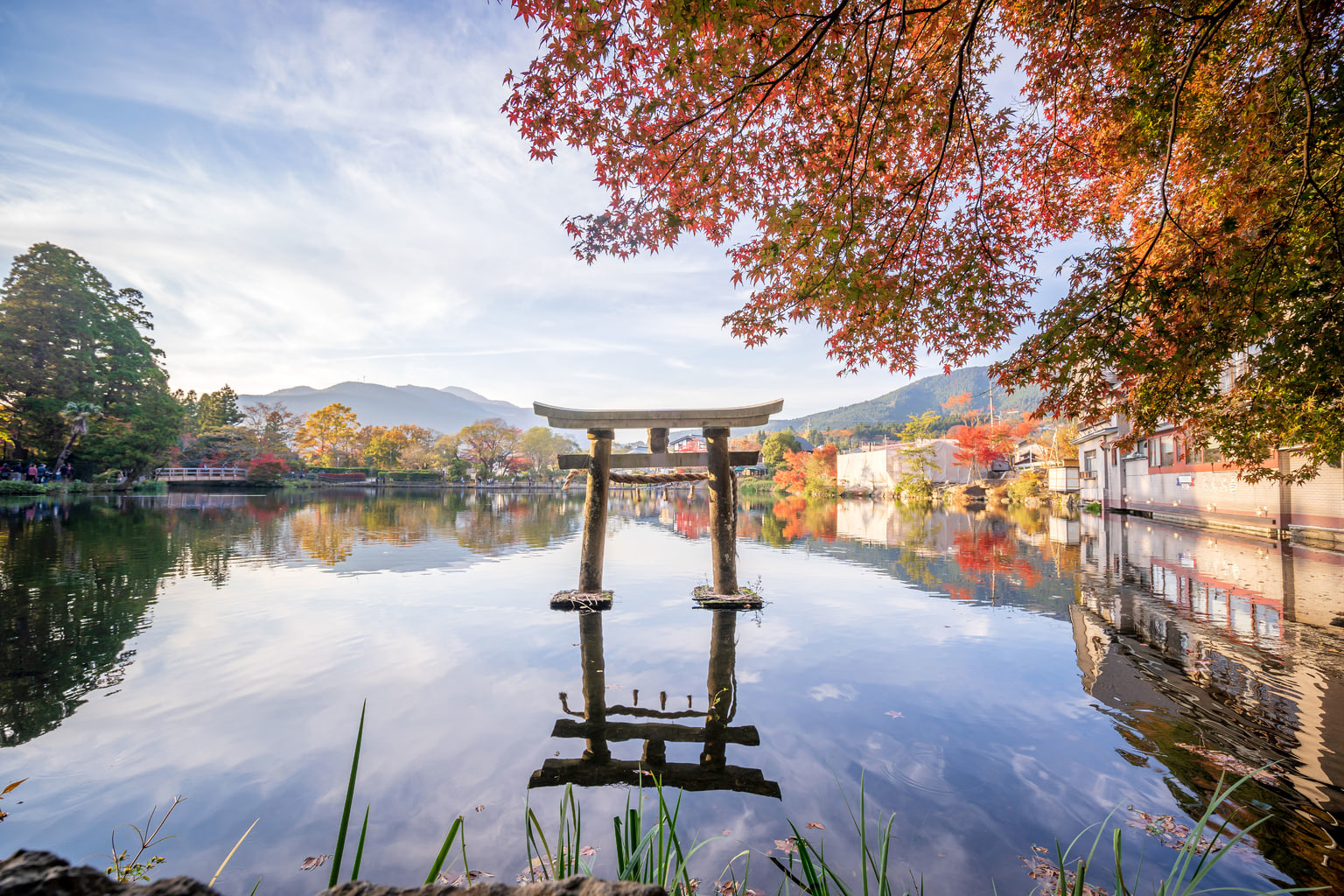
Lake Kinrin
Famous for its morning mist, Lake Kinrin is the perfect place to start your last day. Take a moment to appreciate the breathtaking scenery. The rare lake, with both hot and cold springs welling up beneath, is a 25-minute walk from Yufuin Station.
A 30-minute bus ride from Yufuin Station will get you to the Beppu ropeway. Take the gondola near the 1,375m summit of Mount Tsurumi for panoramic views of Beppu, Oita and the surrounding sea and mountains.
Back in town below the hills, stroll along Yunotsubo Kaido Shopping Street. Spanning the area between Yufuin Station and Lake Kinrin, this road offers opportunities to sample and shop for an array of local products including shoyu-flavored ice cream, soba noodles, and kabosu citrus soaps, among many other offerings.
Continuing to the southwest for another 20-minute drive is the tranquil town of Kokonoe. Visit-worthy onsen options include Fukumoto-ya, an inn dating back to the Edo period that offers bathing in several pools amidst a stunning outdoor riverside setting. Above-and-beyond touches include an artfully handcrafted stone bath, and a wooden board that the proprietor provides for you to prop your drinks atop as you sip and soak.
About an hour’s drive further to the southeast, located due south of Yufuin, is the city of Taketa, whose Nagayu onsen waters are famed for their carbonated bubbles. Experience this unusual phenomenon at Lamune onsen, which takes its name from the popular fizzy drink that its pools resemble. A soak here is said to bring health benefits that can address conditions including heart disease, gastrointestinal disorders and arthritis.
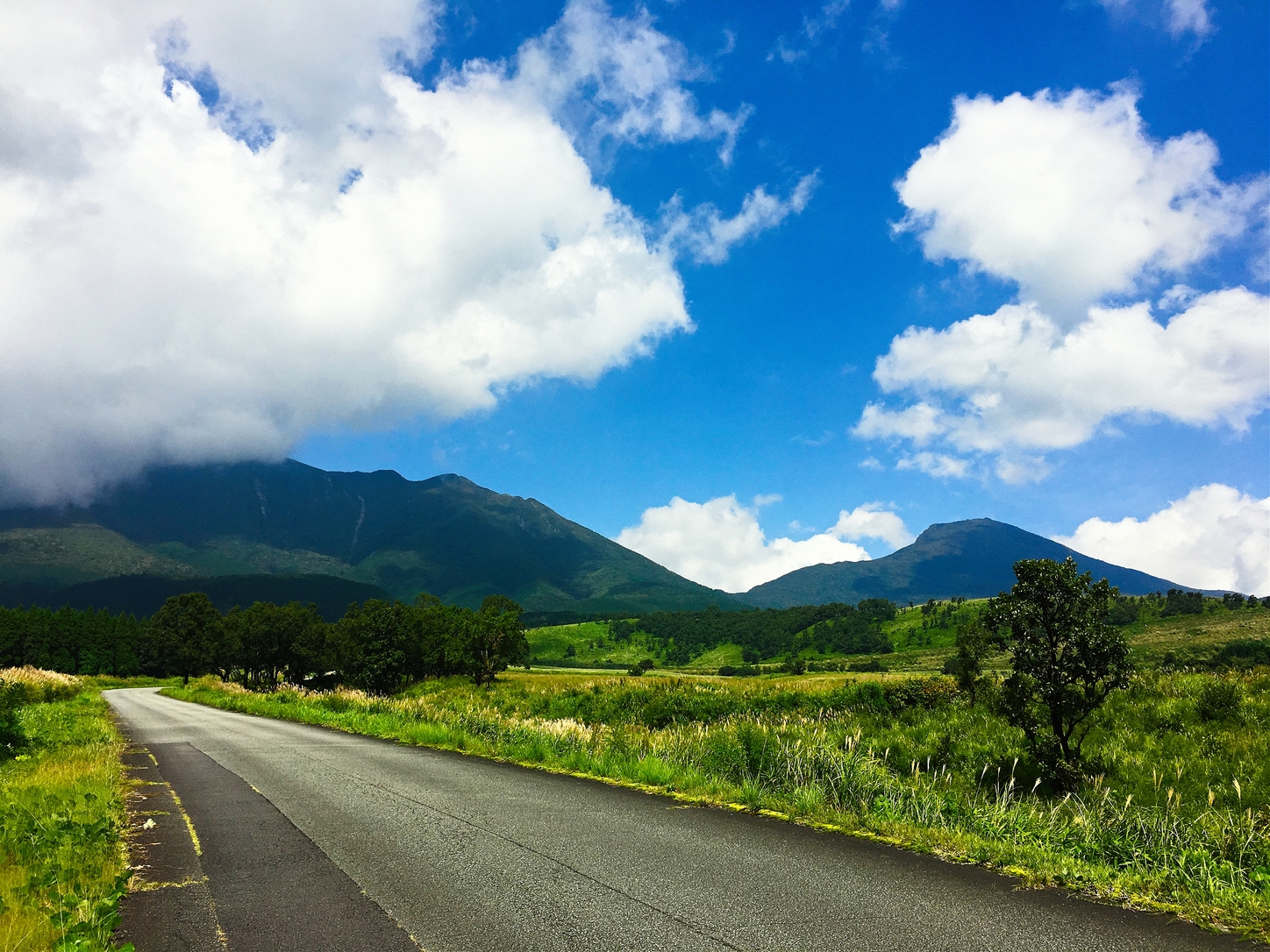
Kuju. Photo by Solveig Boergen
Sample local Taketa wines at Kuju Winery, which began planting its vineyard grapes in 2002 and produced its first crop of wine in 2006. Stroll through the grounds of the winery, which includes a stylish onsite shop and restaurant.
The town is also home to artistic-themed events grounded in local efforts to bring artists and other creatives to the city from around Japan and beyond: namely, the Taketa Art Culture festival and Arts and Crafts Fair in Taketa, both of which are held in autumn, and are inspired by the neighboring Beppu Project.
There is much more to Oita Prefecture than hot springs, from seaside strolls to quaint shopping excursions, however the hot, steamy and beautiful onsen and the laid-back resort towns are unparalleled.

FEEL THE HEAT
Tour the hot steam Hells of Beppu city!
For an extra 5% off use our coupon code TOKYOWEEKENDER during check-out.

